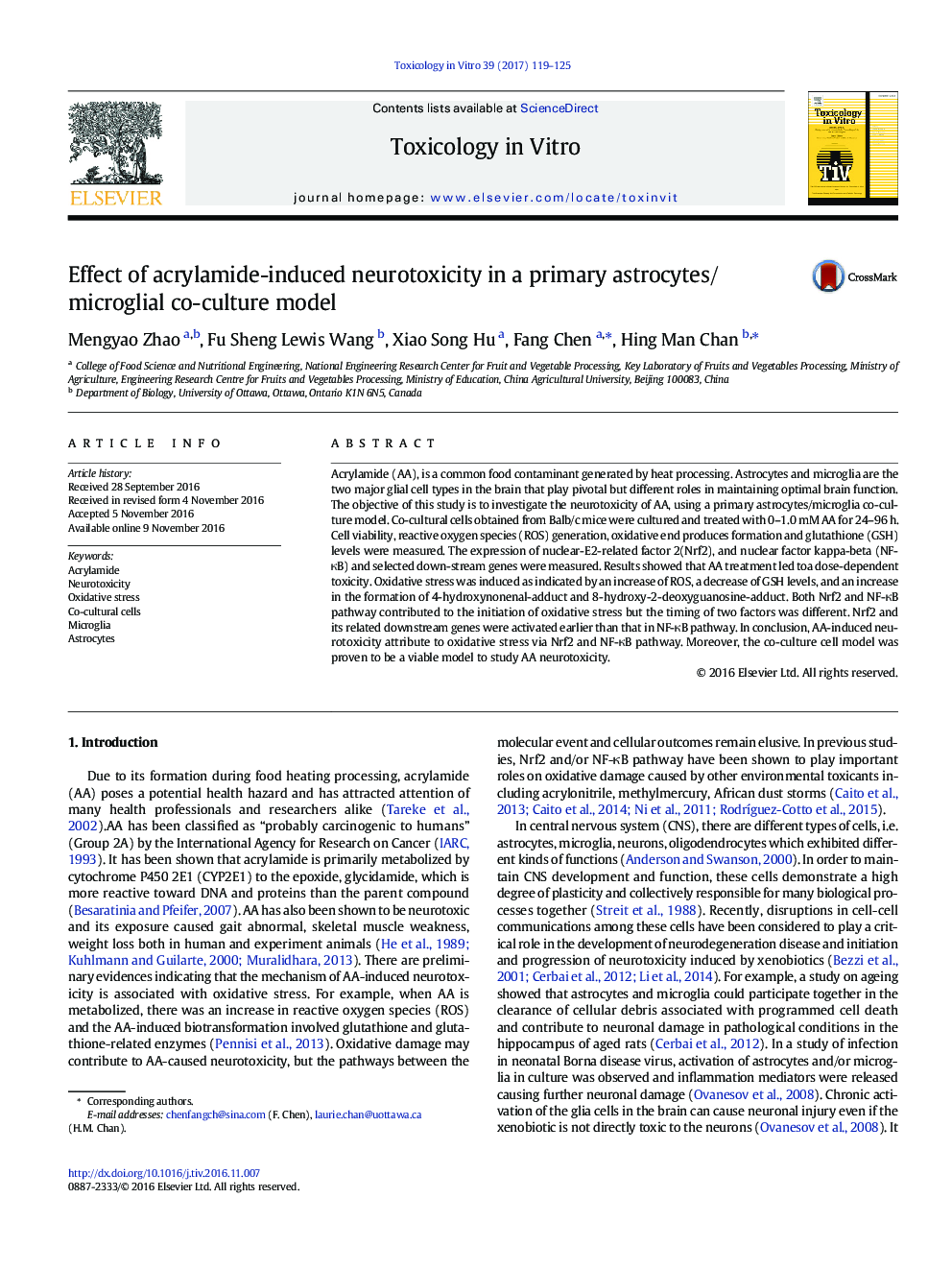| Article ID | Journal | Published Year | Pages | File Type |
|---|---|---|---|---|
| 5562741 | Toxicology in Vitro | 2017 | 7 Pages |
â¢Acrylamide induced neurotoxicity in co culture astroctyes/microglia cells.â¢Oxidative stress was induced as indicated by an increase of ROS, and a decrease of GSH levels.â¢Nrf2 and its related downstream genes were activated earlier than that in NF-κB pathway.â¢The mechanism underlay the neurotoxicity attributed to oxidative stress via Nrf2 and NF-κB pathway in co-culture cells.
Acrylamide (AA), is a common food contaminant generated by heat processing. Astrocytes and microglia are the two major glial cell types in the brain that play pivotal but different roles in maintaining optimal brain function. The objective of this study is to investigate the neurotoxicity of AA, using a primary astrocytes/microglia co-culture model. Co-cultural cells obtained from Balb/c mice were cultured and treated with 0-1.0 mM AA for 24-96 h. Cell viability, reactive oxygen species (ROS) generation, oxidative end produces formation and glutathione (GSH) levels were measured. The expression of nuclear-E2-related factor 2(Nrf2), and nuclear factor kappa-beta (NF-κB) and selected down-stream genes were measured. Results showed that AA treatment led toa dose-dependent toxicity. Oxidative stress was induced as indicated by an increase of ROS, a decrease of GSH levels, and an increase in the formation of 4-hydroxynonenal-adduct and 8-hydroxy-2-deoxyguanosine-adduct. Both Nrf2 and NF-κB pathway contributed to the initiation of oxidative stress but the timing of two factors was different. Nrf2 and its related downstream genes were activated earlier than that in NF-κB pathway. In conclusion, AA-induced neurotoxicity attribute to oxidative stress via Nrf2 and NF-κB pathway. Moreover, the co-culture cell model was proven to be a viable model to study AA neurotoxicity.
